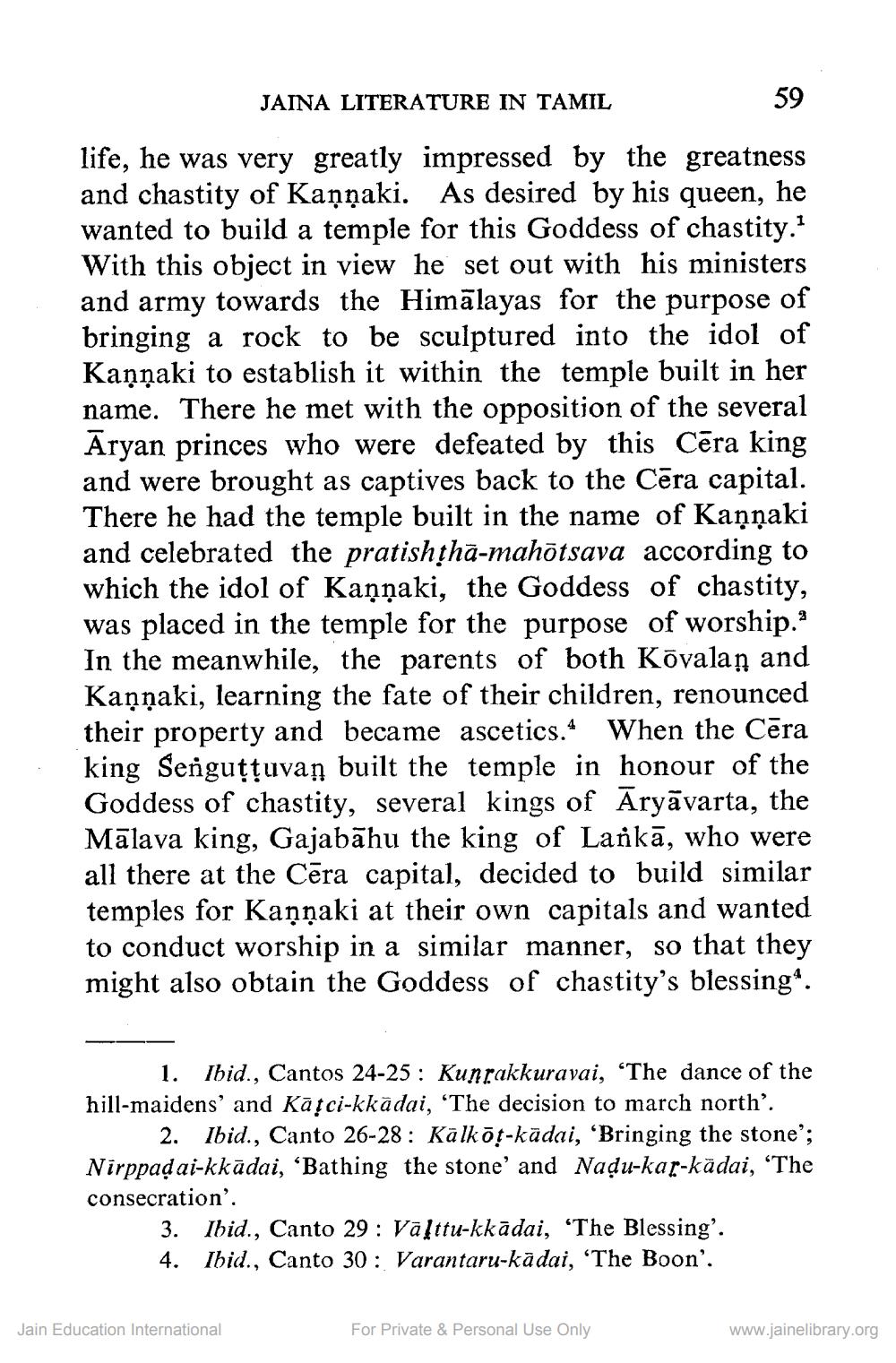________________
JAINA LITERATURE IN TAMIL
59
life, he was very greatly impressed by the greatness and chastity of Kaņņaki. As desired by his queen, he wanted to build a temple for this Goddess of chastity." With this object in view he set out with his ministers and army towards the Himālayas for the purpose of bringing a rock to be sculptured into the idol of Kaņņaki to establish it within the temple built in her name. There he met with the opposition of the several Aryan princes who were defeated by this Cēra king and were brought as captives back to the Cēra capital. There he had the temple built in the name of Kaņņaki and celebrated the pratishthā-mahotsava according to which the idol of Kannaki, the Goddess of chastity, was placed in the temple for the purpose of worship. In the meanwhile, the parents of both Kõvalan and Kaņņaki, learning the fate of their children, renounced their property and became ascetics. When the Cēra king Senguțţuvan built the temple in honour of the Goddess of chastity, several kings of Āryāvarta, the Mālava king, Gajabāhu the king of Lankā, who were all there at the Cēra capital, decided to build similar temples for Kaņņaki at their own capitals and wanted to conduct worship in a similar manner, so that they might also obtain the Goddess of chastity's blessing*.
1. Ibid., Cantos 24-25: Kunrakkurayai, 'The dance of the hill-maidens' and Kațci-kkadai, ‘The decision to march north’.
2. Ibid., Canto 26-28 : Kālkot-kādai, ‘Bringing the stone'; Nirppad ai-kkādai, ‘Bathing the stone' and Nadu-kar-kādai, 'The consecration'.
3. Ibid., Canto 29: Vāļttu-kkādai, 'The Blessing'. 4. Ibid., Canto 30 : Varantaru-kādai, 'The Boon'.
Jain Education International
For Private & Personal Use Only
www.jainelibrary.org




